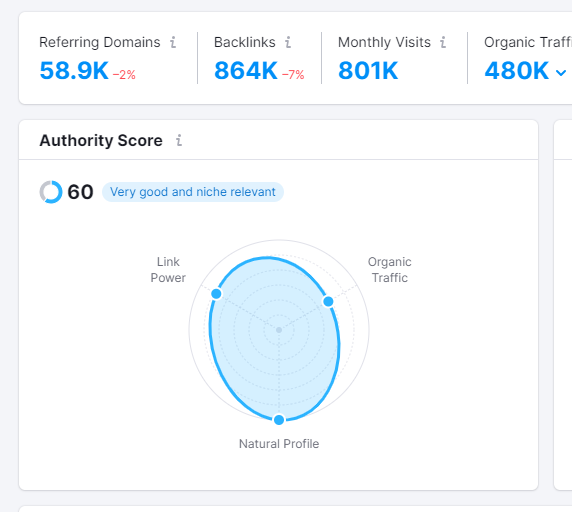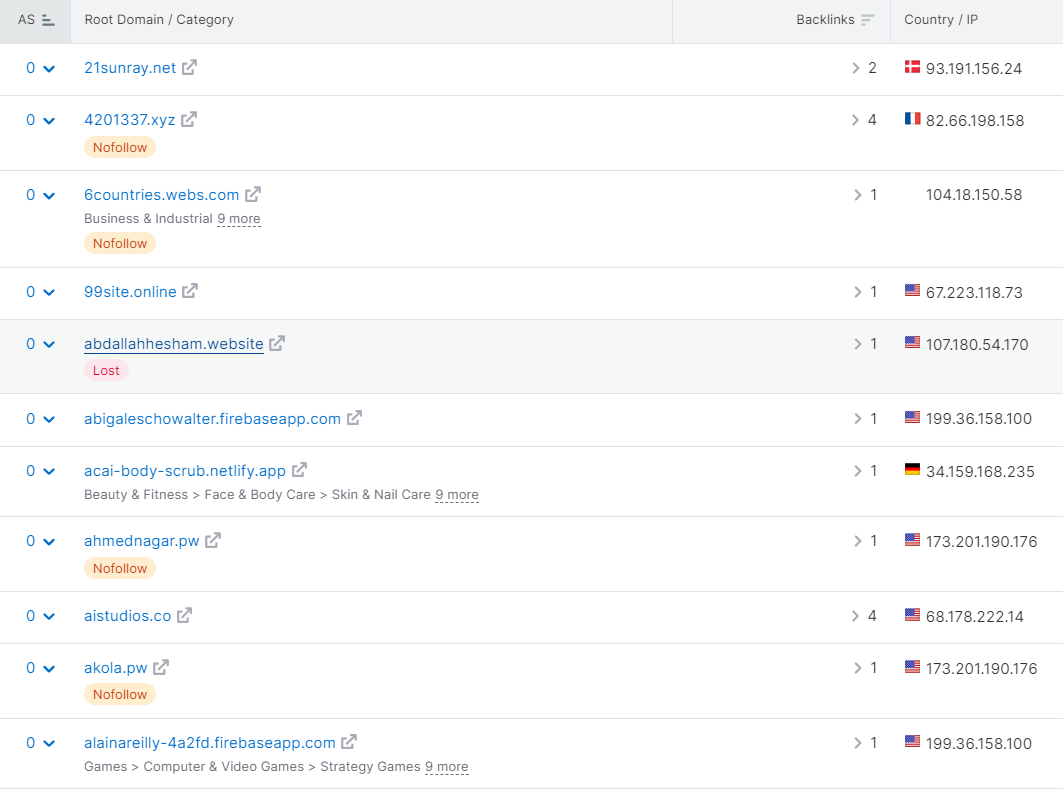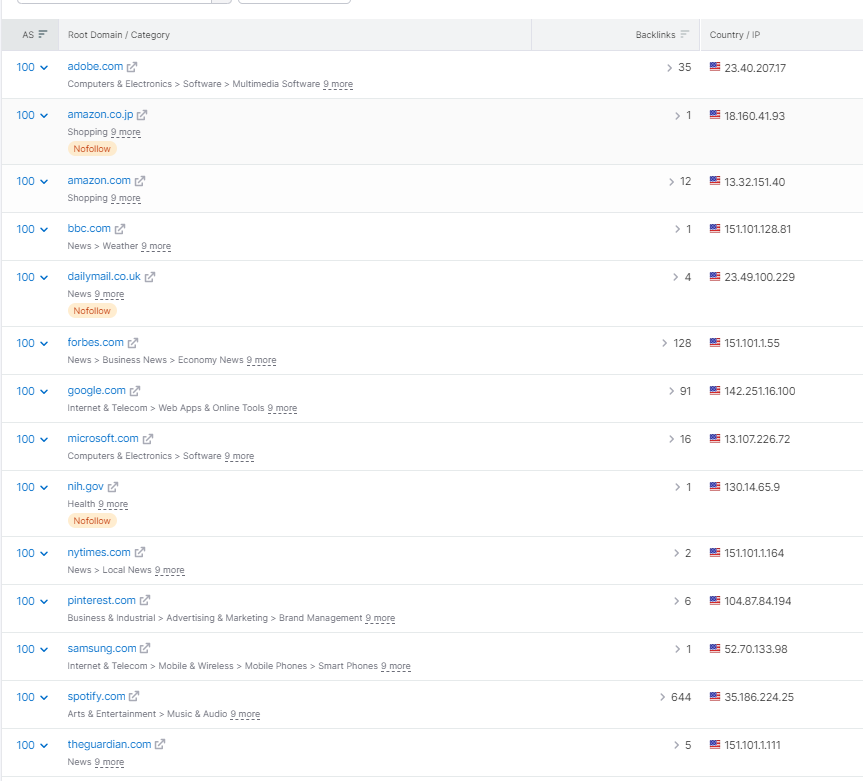Blogs
Practical Insights & Latest Happenings
Don’t miss out on the latest trends and info on SEO, search engines, social media, and more.
September 5, 2023
mothasim

If your search engine rankings are dropping, you know it’s time to audit your website carefully. When doing so, you have to take a good look at your backlink profile to see if it is strong enough to help level up your SEO.
But what is a backlink profile? This is what we will talk about today. By the time you are done reading this article, you will have a clear idea about backlink profiles.
A backlink profile refers to all the websites that have links pointing back to a particular website. In other words, this is a collection of all the websites that mention or link to your website. These links are known as backlinks.
You need a good backlink profile because search engines like Google consider backlinks as a measure of a website’s authority and popularity. A strong backlink profile with high-quality and relevant links can help your site rank higher in search engine results, while a poor backlink profile with low-quality or spammy links will have a negative impact on SERPs.
So, a backlink profile is essentially the overall picture of the links that point to a website and can greatly influence its online visibility and reputation.
Here is a great example of what a strong backlink profile might look like:

As you can see, with 801k monthly visitors 480k of which are organic, this website has 864k backlinks from 58.9k referring domains. But the best part is there is a nice balance of link power, organic traffic, and natural profile, which makes it a stunning backlink profile that any webmaster should desire.
Here “link power” refers to the referring domain’s authority while “organic traffic” means visitors that have directly arrived at a website through search engine results. On the other hand, the term “natural profile” indicates the profile appears organic and genuine without any manipulative or spammy techniques.
A natural backlink profile includes a diverse range of links from different sources, such as reputable websites, industry-related blogs, social media mentions, and references from other online content. The links are usually obtained because other websites find the content on the linked website valuable and relevant, rather than through forced or artificial methods.
Here are the characteristics of a natural and great backlink profile:
Good backlinks come from reputable and trustworthy websites. These websites have a solid reputation, provide valuable content, and are seen as authoritative by search engines. Getting links from such websites adds credibility to your own website.
The referring websites linking to yours should be related to your industry or topic. For example, if you have a sports blog, getting backlinks from other sports-related websites or blogs would be more valuable than getting links from unrelated websites like cooking blogs. Relevant backlinks show search engines that your website is an authoritative source within its niche.
A good backlink profile does not solely rely on one type of backlink or one source. There should be a diverse range of backlinks from various domains, including different types such as guest posts, directory listings, social media profiles, and mentions from influencers. This diversity indicates to search engines that your website has earned links naturally and organically.
A good backlink profile is built over time and shows a gradual growth of backlinks. Search engines are suspicious of sudden spikes in backlinks because this indicates artificial or manipulative tactics. A natural backlink profile demonstrates that your website is being genuinely referenced and recommended by others.
A good backlink profile stays away from spammy or low-quality links. These include links from link farms, irrelevant directories, or websites with poor content. Such links can harm your reputation and lead to penalties from search engines.
Related Blog: How Many Backlinks Do I Have?
This is what a weak backlink profile looks like:

All of the referring domains have low authority and some are web 2.0 sites while some have low quality TLDs. This is a nightmare for any website owner.
In case you didn’t know, web 2.0 sites (e.g. acai-body-scrub.netlify.app) are considered bad for backlinks because they have low authority and are often spammy and vulnerable to penalties. On the other hand, low-quality TLD (Top-Level Domain) websites (e.g. 4201337.xyz) lack credibility and often have a negative impact on SEO.
If you are a webmaster, this is what your backlink profile goal should be:


Once you know what is a backlink profile, now it’s time to learn how to conduct backlink analysis. This involves examining the links that point to your website from other websites.
In fact, this is an ongoing process that requires regular monitoring and optimization to ensure that your website receives valuable and relevant links that contribute positively to your online visibility.
Here’s how to go about this:
First, you need to collect information about the backlinks to your website. You can use tools like Google Search Console, Ahrefs, or Moz to retrieve this data. These tools will provide you with a list of websites that link to your site.
Not all backlinks are created equal. You want to focus on high-quality backlinks from reputable websites. Look for links from authoritative sites in your industry or from well-established websites with a good reputation. These links carry more weight and have a positive impact on your rankings.
It’s important to analyze the relevance of the websites linking to you. Links from websites that are related to your industry or topic are more valuable. For example, if you have a sports blog, getting backlinks from other sports-related websites would be beneficial.
Anchor text is the clickable text of a hyperlink. Analyzing anchor text helps you understand how other websites are linking to your site. Ideally, you want a diverse and natural mix of anchor texts. Too many exact match or keyword-rich anchor texts can raise red flags with search engines.
The number of backlinks is another factor to consider. However, it’s not just about quantity; quality matters more. Having a few high-quality backlinks is more valuable than having numerous low-quality ones. Keep an eye on any sudden or drastic changes in the number of backlinks since it could indicate a problem.
Backlink velocity means the rate at which new backlinks are acquired by a website over a given period of time. It shows how fast or slow these links are appearing over a certain period. For example, if you’re getting a lot of new backlinks within a short time, your backlink velocity is high.
Monitoring backlink velocity provides insights into the growth and popularity of your website. A sudden increase in backlinks can indicate a successful content promotion or an increase in your website’s visibility. On the other hand, a significant drop in backlink acquisition will suggest a decline in interest or relevance.
While analyzing your backlink profile, you may come across some problematic links. These could include spammy or low-quality websites linking to your site. You need to identify such links and take action. You can reach out to the website owners and request removal or use the Google Disavow tool to disassociate your site from those links.
Regularly reviewing your backlink profile is crucial. Keep track of new backlinks you acquire and assess their quality. Additionally, monitor the overall health of your backlink profile over time. This will help you identify any negative trends and make necessary adjustments to improve your link profile.
Related Blog: How Many Backlinks Do I Need?
To keep it simple, quality backlinks come from reputable sources while toxic backlinks are harmful and originate from low-quality or spammy websites.
You can get high quality backlinks from sources that have a good reputation, high domain authority, and relevant content. They are earned naturally because they find your content useful, informative, or authoritative.
On the other hand, toxic backlinks are links that come from websites that often engage in black hat SEO techniques or contain irrelevant or low-value content. If your site has too many toxic backlinks, it can be seen as trying to manipulate search engine rankings rather than providing genuine value to users.

Here are some effective link building techniques you can employ to strengthen your backlink profile:
Write high-quality, informative articles for websites relevant to your niche. Include a link back to your website in the author bio or within the content itself.
Look for broken links on other credible websites and get in touch with the webmasters, suggesting your own content as a replacement. This helps them fix their broken links while earning you a valuable backlink.
Identify popular content in your industry, create something better, and reach out to websites linking to the original content, asking them to link to your improved version.
Connect with influencers and thought leaders in your niche. Offer to collaborate on content, interviews, or expert roundups that can earn you backlinks from their websites.
Create comprehensive, authoritative resource guides, tutorials, or tools that others in your industry can reference. Outreach to relevant websites and let them know about your valuable resource, increasing the chances of earning backlinks.
Share your content on social media platforms to attract attention and potential backlinks from users who find it valuable. Engage with industry influencers and encourage them to share your content as well.
Monitor mentions of your brand or website online and reach out to the respective website owners to request that they turn those mentions into backlinks.
Analyze your competitors’ backlink profiles with SEO tools and look for high-quality backlinks in their websites. Now reach out to those host websites and ask for similar links for your own website.
Submit your website to reputable local directories, industry-specific directories, and review websites. These listings often include backlinks to your website, enhancing your backlink profile.
Provide testimonials or reviews for products, services, or tools that you use. Contact the companies and ask if they would link back to your website when publishing your testimonial.
Having a strong and natural backlink profile should be one of the goals of any effective and result-driven SEO campaign. Now that you know what is a backlink profile, we believe your link building strategies will significantly improve and you will be able to propel your website’s popularity the way you have planned.
1. How can I remove toxic backlinks?
Ans. Ans. First use backlink analysis tools to identify potentially harmful links pointing to your site.
Then reach out to the owners of the linking websites and request them to remove the toxic backlinks. If you can’t get the toxic backlinks removed manually, try Google’s Disavow Links tool to inform search engines of ignoring those links when evaluating your backlink profile.
2. Should I disavow all low-quality backlinks?
Ans. Disavowing low-quality backlinks should be done carefully and only as a final option. We recommend that you first try to remove or request the removal of toxic backlinks manually. Only if you are unable to remove them should you consider disavowing them using Google’s Disavow Links tool. Disavowing should be used sparingly and primarily for backlinks that pose a significant risk to your SEO.